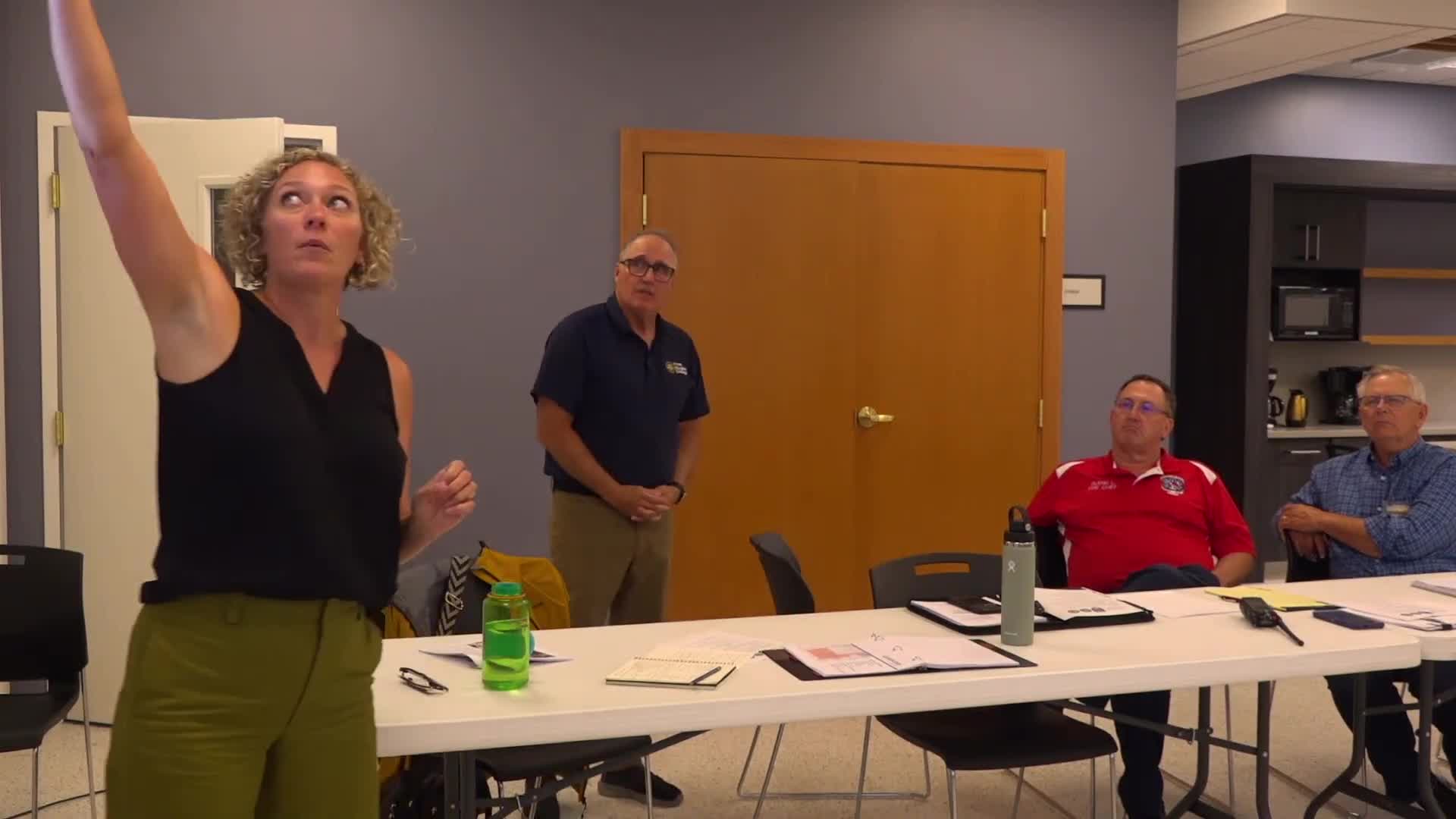Oregon Fire District evaluates response times and automatic aid systems for service improvement
August 01, 2025 | Oregon, Dane County, Wisconsin
This article was created by AI summarizing key points discussed. AI makes mistakes, so for full details and context, please refer to the video of the full meeting. Please report any errors so we can fix them. Report an error »

On July 30, 2025, the Oregon Joint Village Board convened a significant meeting focused on the future of fire and emergency medical services (EMS) in the rapidly growing Oregon area of Dane County, Wisconsin. The discussions highlighted the challenges and opportunities presented by the region's evolving landscape, particularly in relation to property ownership, response times, and collaborative emergency services.
A key topic was the impact of Oregon's growth on fire and EMS operations. With a fast-increasing population and diverse geographical features—including hills, wetlands, and waterways—officials emphasized the need for strategic planning in emergency response. The meeting underscored the importance of understanding local geography when determining the placement of fire stations and resources.
Jim, a key speaker at the meeting, elaborated on the distinctions between automatic aid and mutual aid agreements. Automatic aid involves pre-established governmental agreements that ensure immediate dispatch of resources for specific emergencies, while mutual aid allows for broader regional support during larger incidents. This framework is crucial for the Oregon fire district, which, as a combination department, often faces staffing challenges that necessitate external assistance.
The meeting also addressed the potential for regionalization of fire services, suggesting that Oregon's existing fire district model could serve as a blueprint for neighboring communities. This collaborative approach could enhance efficiency and resource sharing among departments, ultimately improving emergency response capabilities.
Data analysis presented during the meeting revealed critical insights into response patterns. A heat map illustrated frequent call locations, highlighting areas such as senior living facilities and busy intersections that drive emergency responses. This data is vital for planning future fire station locations to ensure optimal coverage and response times.
The current fire station, while strategically located in downtown Oregon, faces limitations due to its small size and landlocked position. Discussions included the challenges of expanding the station, particularly given the presence of significant stormwater infrastructure beneath the property.
As the meeting concluded, officials recognized the need for ongoing evaluation of fire and EMS resources to adapt to the community's growth. The insights gained from this meeting will inform future decisions regarding fire station placements and collaborative efforts with surrounding towns, ensuring that the Oregon area remains well-equipped to handle emergencies effectively.
A key topic was the impact of Oregon's growth on fire and EMS operations. With a fast-increasing population and diverse geographical features—including hills, wetlands, and waterways—officials emphasized the need for strategic planning in emergency response. The meeting underscored the importance of understanding local geography when determining the placement of fire stations and resources.
Jim, a key speaker at the meeting, elaborated on the distinctions between automatic aid and mutual aid agreements. Automatic aid involves pre-established governmental agreements that ensure immediate dispatch of resources for specific emergencies, while mutual aid allows for broader regional support during larger incidents. This framework is crucial for the Oregon fire district, which, as a combination department, often faces staffing challenges that necessitate external assistance.
The meeting also addressed the potential for regionalization of fire services, suggesting that Oregon's existing fire district model could serve as a blueprint for neighboring communities. This collaborative approach could enhance efficiency and resource sharing among departments, ultimately improving emergency response capabilities.
Data analysis presented during the meeting revealed critical insights into response patterns. A heat map illustrated frequent call locations, highlighting areas such as senior living facilities and busy intersections that drive emergency responses. This data is vital for planning future fire station locations to ensure optimal coverage and response times.
The current fire station, while strategically located in downtown Oregon, faces limitations due to its small size and landlocked position. Discussions included the challenges of expanding the station, particularly given the presence of significant stormwater infrastructure beneath the property.
As the meeting concluded, officials recognized the need for ongoing evaluation of fire and EMS resources to adapt to the community's growth. The insights gained from this meeting will inform future decisions regarding fire station placements and collaborative efforts with surrounding towns, ensuring that the Oregon area remains well-equipped to handle emergencies effectively.
View full meeting
This article is based on a recent meeting—watch the full video and explore the complete transcript for deeper insights into the discussion.
View full meeting
